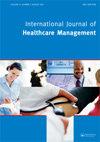{"title":"2型糖尿病新药:医疗保健可持续性与更好的患者护理途径相结合的挑战","authors":"Francesco Ferrara, A. Zovi, R. Langella, Fabiola Cavallaro, E. Nava, U. Trama, A. Vitiello","doi":"10.1080/20479700.2023.2210393","DOIUrl":null,"url":null,"abstract":"The increased prescribing and dispensing of new drugs for type 2 diabetes mellitus due to less stringent prescription regulations has led both to bringing therapies closer to the patient, as required by post-Covid-19 European policies, and to an unpredictable increase in health care spending. In particular, in Italy, with the introduction of the National Plan for Reconstruction and Resilience, an attempt has been made to give more prescriptive freedom to the General Practitioner (GP). Through the introduction of prescriptive notes, patients can directly go to the primary care physician for the prescription of chronic therapies, without going to the specialist doctor anymore. Note 100, introduced at the beginning of 2022, defines the prescription of specific categories of medicines which are indicated for the treatment of type 2 diabetes mellitus and which are directly prescribed by the GP. This study aimed to analyze the prescribing trend of these medicines, by comparing the first half of the year 2021, without Note 100, with the first half of the year 2022, afterwards the introduction of the new regulations. © 2023 Informa UK Limited, trading as Taylor & Francis Group.","PeriodicalId":46911,"journal":{"name":"International Journal of Healthcare Management","volume":"1 1","pages":""},"PeriodicalIF":1.4000,"publicationDate":"2023-05-12","publicationTypes":"Journal Article","fieldsOfStudy":null,"isOpenAccess":false,"openAccessPdf":"","citationCount":"1","resultStr":"{\"title\":\"New drugs for type 2 diabetes mellitus: The challenge of the health care sustainability combined with a better patient care access\",\"authors\":\"Francesco Ferrara, A. Zovi, R. Langella, Fabiola Cavallaro, E. Nava, U. Trama, A. Vitiello\",\"doi\":\"10.1080/20479700.2023.2210393\",\"DOIUrl\":null,\"url\":null,\"abstract\":\"The increased prescribing and dispensing of new drugs for type 2 diabetes mellitus due to less stringent prescription regulations has led both to bringing therapies closer to the patient, as required by post-Covid-19 European policies, and to an unpredictable increase in health care spending. In particular, in Italy, with the introduction of the National Plan for Reconstruction and Resilience, an attempt has been made to give more prescriptive freedom to the General Practitioner (GP). Through the introduction of prescriptive notes, patients can directly go to the primary care physician for the prescription of chronic therapies, without going to the specialist doctor anymore. Note 100, introduced at the beginning of 2022, defines the prescription of specific categories of medicines which are indicated for the treatment of type 2 diabetes mellitus and which are directly prescribed by the GP. This study aimed to analyze the prescribing trend of these medicines, by comparing the first half of the year 2021, without Note 100, with the first half of the year 2022, afterwards the introduction of the new regulations. © 2023 Informa UK Limited, trading as Taylor & Francis Group.\",\"PeriodicalId\":46911,\"journal\":{\"name\":\"International Journal of Healthcare Management\",\"volume\":\"1 1\",\"pages\":\"\"},\"PeriodicalIF\":1.4000,\"publicationDate\":\"2023-05-12\",\"publicationTypes\":\"Journal Article\",\"fieldsOfStudy\":null,\"isOpenAccess\":false,\"openAccessPdf\":\"\",\"citationCount\":\"1\",\"resultStr\":null,\"platform\":\"Semanticscholar\",\"paperid\":null,\"PeriodicalName\":\"International Journal of Healthcare Management\",\"FirstCategoryId\":\"1085\",\"ListUrlMain\":\"https://doi.org/10.1080/20479700.2023.2210393\",\"RegionNum\":0,\"RegionCategory\":null,\"ArticlePicture\":[],\"TitleCN\":null,\"AbstractTextCN\":null,\"PMCID\":null,\"EPubDate\":\"\",\"PubModel\":\"\",\"JCR\":\"Q4\",\"JCRName\":\"HEALTH POLICY & SERVICES\",\"Score\":null,\"Total\":0}","platform":"Semanticscholar","paperid":null,"PeriodicalName":"International Journal of Healthcare Management","FirstCategoryId":"1085","ListUrlMain":"https://doi.org/10.1080/20479700.2023.2210393","RegionNum":0,"RegionCategory":null,"ArticlePicture":[],"TitleCN":null,"AbstractTextCN":null,"PMCID":null,"EPubDate":"","PubModel":"","JCR":"Q4","JCRName":"HEALTH POLICY & SERVICES","Score":null,"Total":0}
引用次数: 1
New drugs for type 2 diabetes mellitus: The challenge of the health care sustainability combined with a better patient care access
The increased prescribing and dispensing of new drugs for type 2 diabetes mellitus due to less stringent prescription regulations has led both to bringing therapies closer to the patient, as required by post-Covid-19 European policies, and to an unpredictable increase in health care spending. In particular, in Italy, with the introduction of the National Plan for Reconstruction and Resilience, an attempt has been made to give more prescriptive freedom to the General Practitioner (GP). Through the introduction of prescriptive notes, patients can directly go to the primary care physician for the prescription of chronic therapies, without going to the specialist doctor anymore. Note 100, introduced at the beginning of 2022, defines the prescription of specific categories of medicines which are indicated for the treatment of type 2 diabetes mellitus and which are directly prescribed by the GP. This study aimed to analyze the prescribing trend of these medicines, by comparing the first half of the year 2021, without Note 100, with the first half of the year 2022, afterwards the introduction of the new regulations. © 2023 Informa UK Limited, trading as Taylor & Francis Group.


